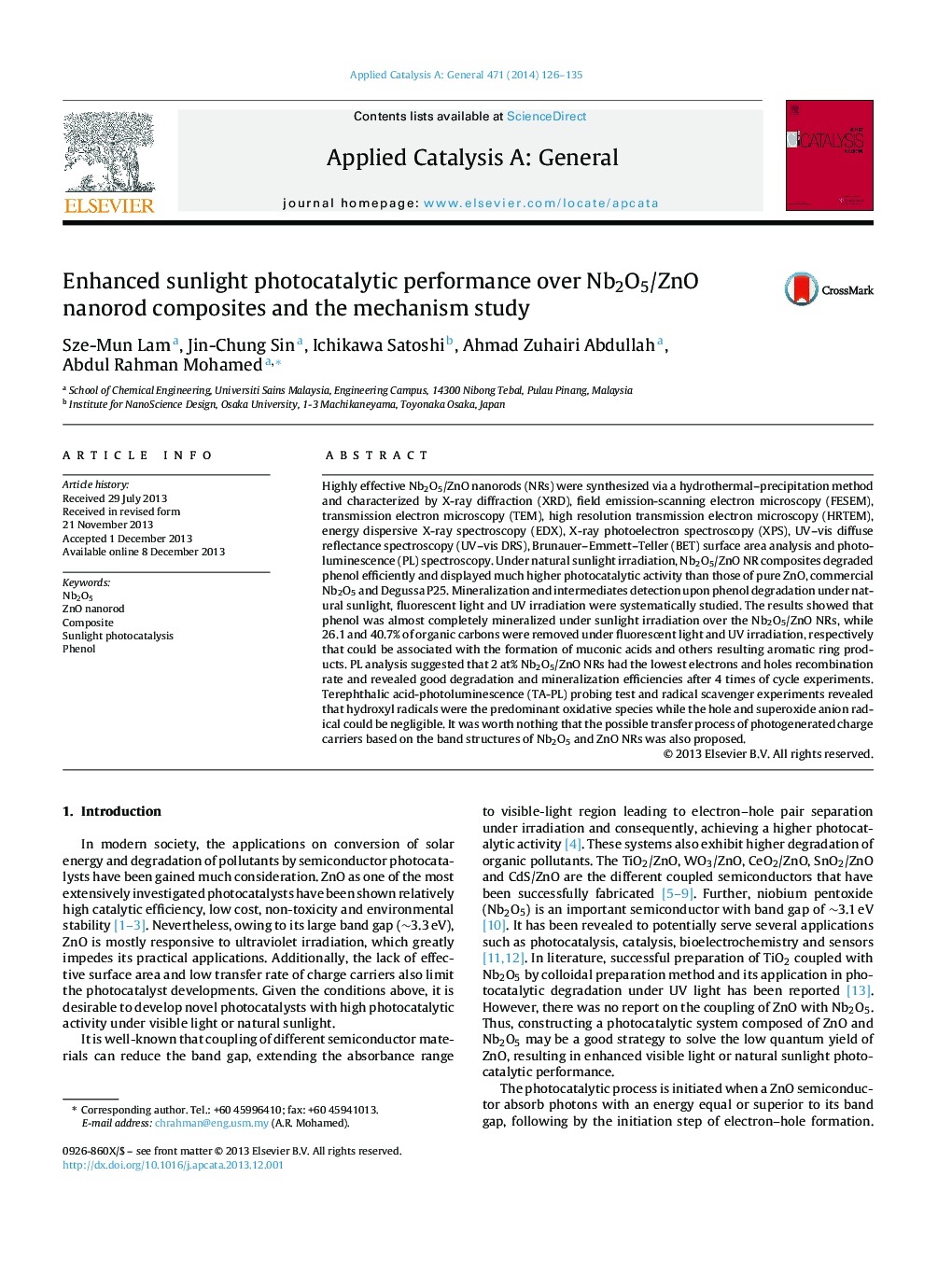| کد مقاله | کد نشریه | سال انتشار | مقاله انگلیسی | نسخه تمام متن |
|---|---|---|---|---|
| 39909 | 45839 | 2014 | 10 صفحه PDF | دانلود رایگان |

• Nb2O5/ZnO nanorod was synthesized by a facile hydrothermal–precipitation method.
• Effect of Nb2O5 content on the photoactivity of composite was studied in detail.
• Sunlight photoactivity of composite was much higher than those of pure ZnO and P25.
• Reactive species involved in phenol degradation were systematically investigated.
• Sunlight degradation mechanism of phenol over Nb2O5/ZnO was also discussed.
Highly effective Nb2O5/ZnO nanorods (NRs) were synthesized via a hydrothermal–precipitation method and characterized by X-ray diffraction (XRD), field emission-scanning electron microscopy (FESEM), transmission electron microscopy (TEM), high resolution transmission electron microscopy (HRTEM), energy dispersive X-ray spectroscopy (EDX), X-ray photoelectron spectroscopy (XPS), UV–vis diffuse reflectance spectroscopy (UV–vis DRS), Brunauer–Emmett–Teller (BET) surface area analysis and photoluminescence (PL) spectroscopy. Under natural sunlight irradiation, Nb2O5/ZnO NR composites degraded phenol efficiently and displayed much higher photocatalytic activity than those of pure ZnO, commercial Nb2O5 and Degussa P25. Mineralization and intermediates detection upon phenol degradation under natural sunlight, fluorescent light and UV irradiation were systematically studied. The results showed that phenol was almost completely mineralized under sunlight irradiation over the Nb2O5/ZnO NRs, while 26.1 and 40.7% of organic carbons were removed under fluorescent light and UV irradiation, respectively that could be associated with the formation of muconic acids and others resulting aromatic ring products. PL analysis suggested that 2 at% Nb2O5/ZnO NRs had the lowest electrons and holes recombination rate and revealed good degradation and mineralization efficiencies after 4 times of cycle experiments. Terephthalic acid-photoluminescence (TA-PL) probing test and radical scavenger experiments revealed that hydroxyl radicals were the predominant oxidative species while the hole and superoxide anion radical could be negligible. It was worth nothing that the possible transfer process of photogenerated charge carriers based on the band structures of Nb2O5 and ZnO NRs was also proposed.
Figure optionsDownload high-quality image (168 K)Download as PowerPoint slide
Journal: Applied Catalysis A: General - Volume 471, 10 February 2014, Pages 126–135